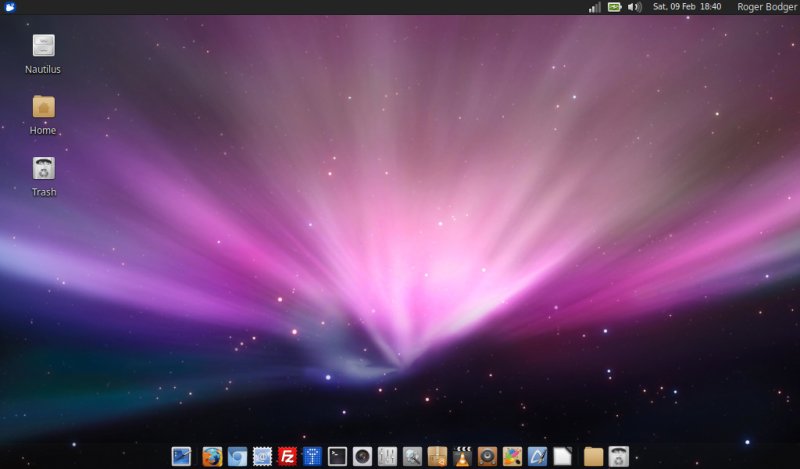Updated: March 2, 2019
The sturdy little Asus eeePC is one of my best purchases ever. This 10-inch machine has served me loyally for almost a full decade, going to places, and I mean going to places. I've used it heavily for travel, and it's done pretty much everything. I wrote books on it, edited media, used encryption, synced 100+ GB datasets with rsync, and it would give me 7-10 hours of battery, even with Wireless turned on. But age takes its toll.
My latest experiment with this machine was upgrading the Trusty instance to Xerus, in both cases with the Xfce desktop. You should really read those two articles first to get the understanding of how time and system change affected this, er, system, rolling from 2015 to 2017 to present day 2019. To-day, I'd like to invite you to a most interesting experiment - to see whether a 10-year-old lowly netbook can still be relevant.

So what now?
You wouldn't really get the impression from the image above, but the exterior has deteriorated some. Namely, the suede-red plastic cover has gone mushy, and it's sort of half-resiny, so it catches dust, and it looks like some child smeared it with jam. But the rest of it is still tip top, with a superb, utterly ergonomic keyboard, featuring excellent spacing, feel and click sound, one of the best I've ever had on any laptop. Not bad for something that cost just a little more than three hundred dollars - although that's not too cheap if you think about.
Anyway, I fired the system and ran the upgrade from the command line. This procedure took about 1 hour and 45 minutes to complete. The whole cycle, one reboot, done. Ironically, this is less time I had to waste upgrading Windows 10 to Build 1809. Lolzers. Yeah, progress and everything. Long story short, the procedure was painless, smooth, without any errors whatsoever, and come the desktop login, my system look identical to just before the upgrade.

Running Xubuntu 18.04 - more like pacing slowly
I started doing my usual set of tests. Firefox took almost a minute to load, then another 20 seconds to display the Google page, and this with Noscript extension that blocks Javascript. The performance was really bad, and even basic things took forever. I did have some updates, so the system works under all that strain, but it wasn't a smooth experience. At all.



LibreOffice failed to load. The application actually crashed twice before I gave up. I was hitting swap seconds into the session, and I wasn't having any fun. TrueCrypt works, but it gave me a bad file descriptor error trying to open a container, possibly because it was taking forever to scan mount points - everything worked fine on a second attempt.

Next, I tried video playback. Remember that in Trusty and Xenial, video playback was reasonable up to 720p, which is amazing. Well here, I had only about 1 FPS rate in both Parole and VLC. I don't know what went wrong or why, but watching anything at all was simply impossible.
Resources
Just take a look at what top shows. The load is about 9. There are four tabs open in Firefox, none of them with Javascript enabled, and yet, each tab is eating about 25% CPU, plus there's a separate process for the extensions doing the same thing. I'm playing music in VLC, that's 14% CPU. Dpkg (installing some stuff) is eating about the same as VLC, which ain't bad, and Xorg is consuming about 5% of the processor time. Quite a lot happening on an ancient little box.

This could just be the natural progress of things, but I fail to see why there ought to be such a massive difference. I am aware that hardware choice makes a difference. For instance, my old LG RD510 laptop still works quite well (unless it's running Gnome-based desktops like Fedora 29), but it has a more powerful processor, 4 GB of RAM and a faster disk. And it will soon be put to new and fun tests.
Another example is my 2011 desktop, which I still consider a beast. It's only about 10-15% off performance wise compared to the latest systems, and it handles every single task beautifully - and blistering fast, too. The Asus eeePC wasn't powerful even when I bought it, so this impacts the end results. But going from reasonable to no-go between one release and another feels like a combination of hardware antics and software neglect.
At this point, I decided to stop.
Conclusion
Not a happy outcome, now is it? I was hoping to heap praise and be amazed and all touchy-feely. Alas, it seems the eeePC has reached the end of its useful life in the modern era. Now, we must not forget the massive bloat going into software products. Incompetent, lazy coding and arbitrary assumptions that people will upgrade hardware to match silly software requirements seem to be the driving force behind most of the garbage that we are forced to utilize today. Quite often, a single browser tab often consumes as much memory as this ancient machine has in store. Is there a good reason for that? Well, if things were fine two years back, what has cardinally changed? Nothing, of course.
But not all is lost. Because I have one more card up my sleeve. And that's Plasma. This lovely desktop environment is fast and elegant and just the perfect candidate to try on the eeePC. Perhaps it can give the aging little Asus the boost it needs. Only you will have to wait for the second article to sample of that adventure. Stay tuned.
Cheers.